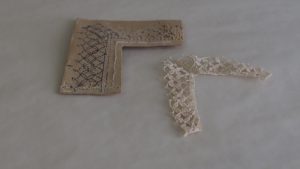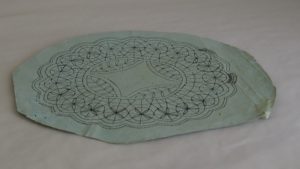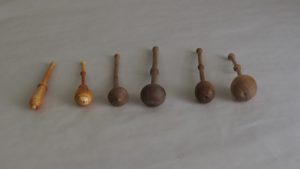Bobbin Lace
Bobbin lace is a lacemaking technique made by the braiding and twisting lengths of thread wound on bobbins – in Portugal, the art of bobbin lace has a special expression in the fishing areas of the coast, with greater emphasis on Caminha, Póvoa de Varzim, Vila do Conde, Árvore, Azurara, Setúbal, Lagos, and Olhão, having also existed in Silves, Sines and Sesimbra. There is also the manufacture of bobbin lace in Nisa, in the Alentejo and Farminhão, near Viseu.
In 1887, with the founding of the Rainha D. Maria Pia School of Industrial Design (later the Industrial School of Rendeiras Josefa de Óbidos), under the direction of D. Maria Augusta de Prostes Bordalo Pinheiro, bobbin lace reached a level of perfection and artistry hard to match.
The bobbin is a small instrument composed of a rod whose tip has a spherical shape. On the other end of the rod, the thread is wound and is attached to a pattern design or lace design. The production of this type of lace requires the use of several bobbins, the quantity of which varies according to the complexity of the design. The lace is produced on top of pillows placed on a wooden easel. The yarn used by bobbin lacemakers is cotton, predominantly white. The mold used is called “Pique”. Design templates are old, being passed from one generation to another.
The expression “Where there are nets, there are rents” is well-known and the Algarve was no exception, as were almost all the coastal villages where fishing activities are carried out. At Fuseta, this activity is an ancient practice and this legacy is continued today by Nídia Gouveia – “I started learning bobbin lace in Bairro dos Pescadores, Fuseta, with Dona Morália. Later I presented a project related to rents to the Fuseta Parish Council and to the Nossa Senhora do Carmo Social Center. I started teaching the basic technique to fixed age between nine and fifty. Some of these people have already passed away and the younger ones never dedicated themselves to this art. Since this is not my professional activity, I dedicate a few hours a week to it”.




